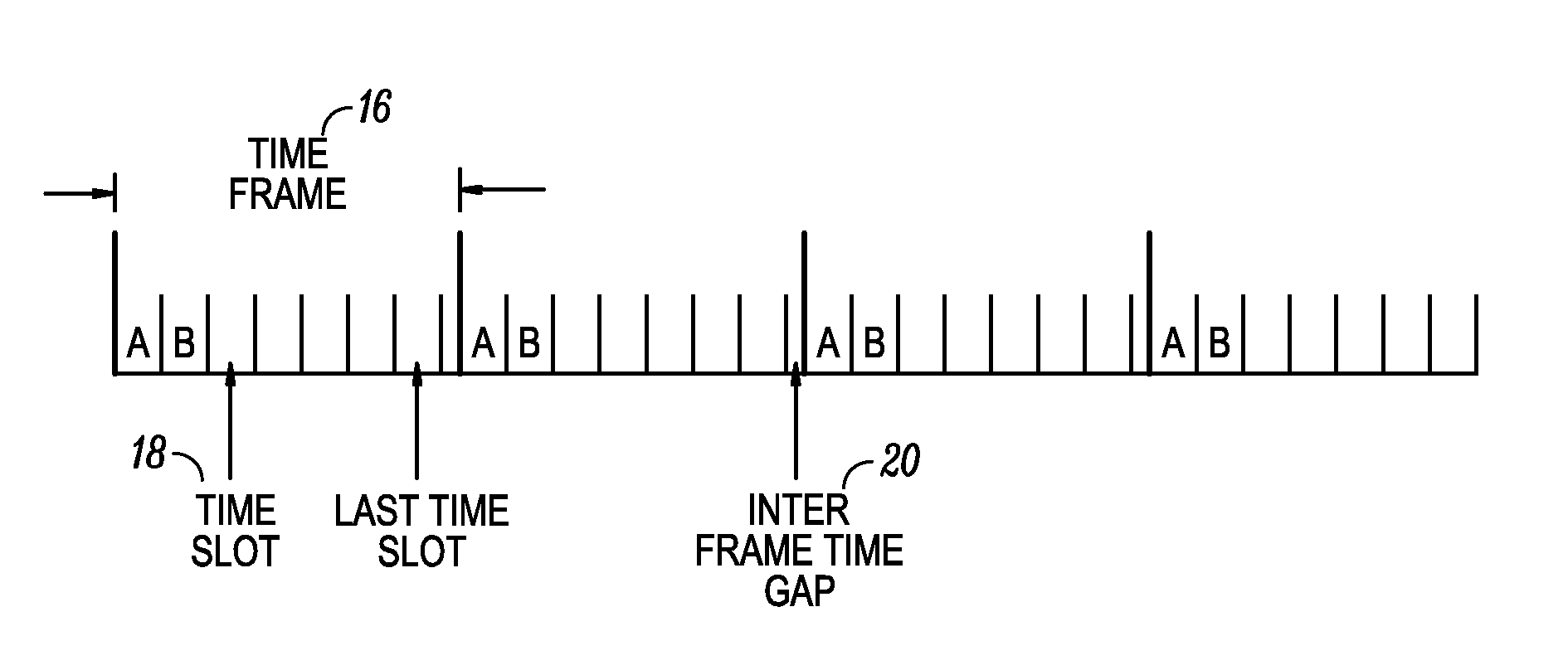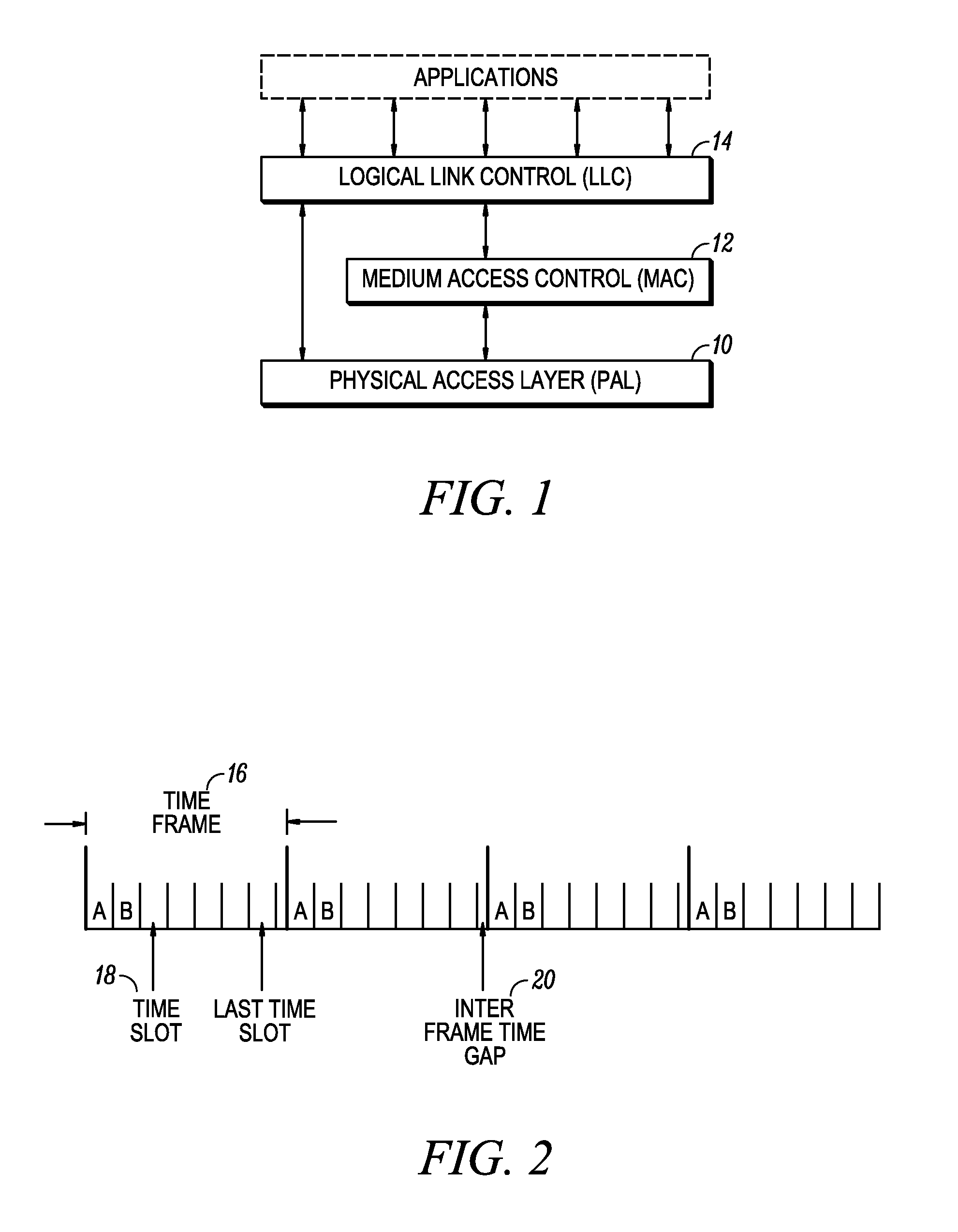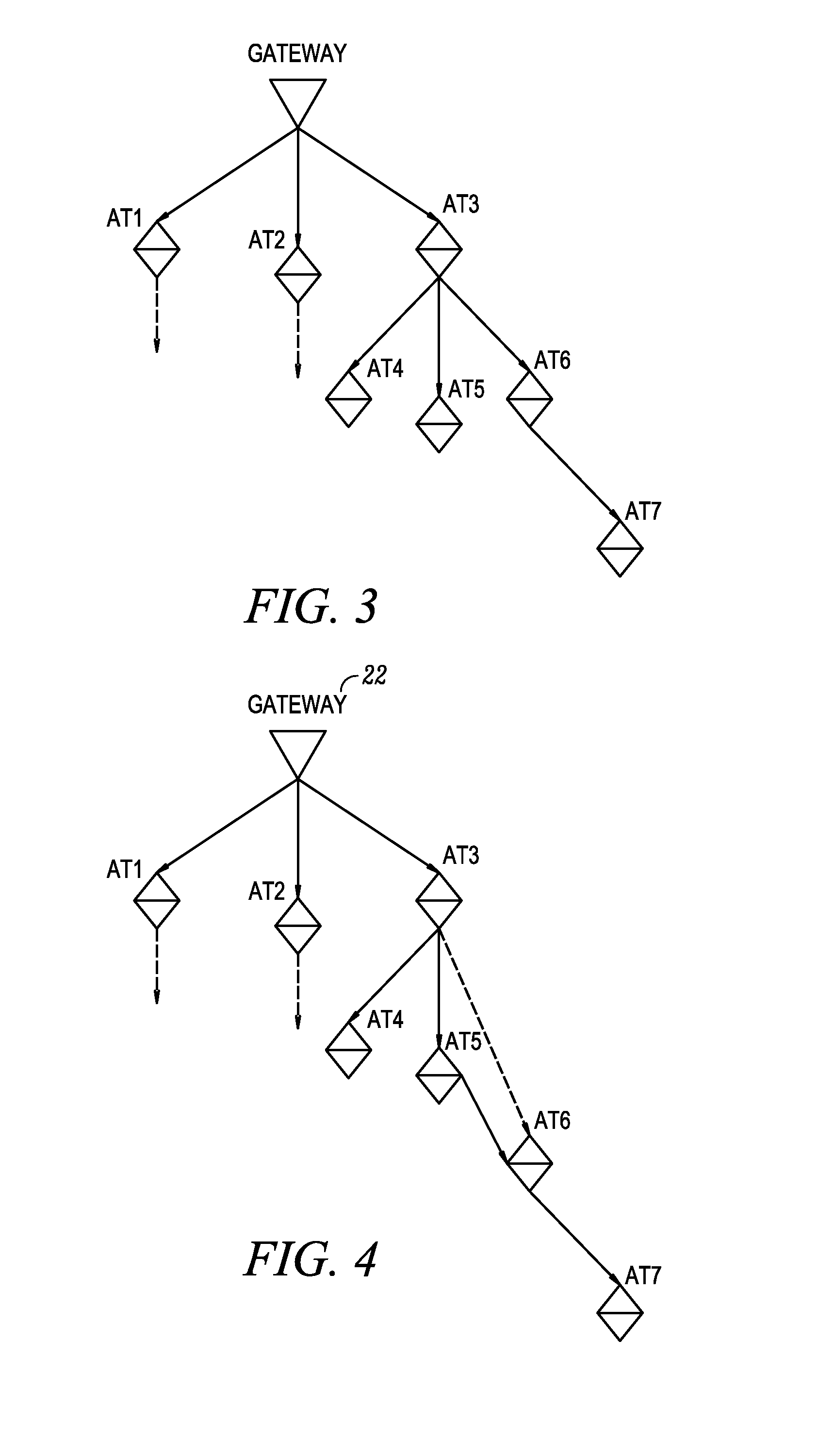Time division protocol for an ad-hoc, peer-to-peer radio network having coordinating channel access to shared parallel data channels with separate reservation channel
a radio network and time division technology, applied in data switching networks, high-level techniques, wireless commuication services, etc., can solve the problems of tdd systems, which have not been deployed in voice systems, and conventional carrier-sense multiple access (csma) algorithms experience diminishing returns, so as to achieve maximum spectrum use, improve message reliability, and improve throughput and reliability.
- Summary
- Abstract
- Description
- Claims
- Application Information
AI Technical Summary
Benefits of technology
Problems solved by technology
Method used
Image
Examples
Embodiment Construction
[0034]For purposes of a better understanding of the description, the following definitions and abbreviations are hereby given:
Definitions
“Service Area of a Terminal”
[0035]The geographical area where the transmission of a terminal can be received at a level higher than environment noise.
“Receive Set of a Terminal”
[0036]The set of terminals located within the service area.
“Transmit Set of a Terminal”
[0037]The set of terminals containing one particular terminal within their service areas.
“Service Set of a Terminal”
[0038]The set of terminals that can receive the transmission of one particular terminal and can be received at that terminal (the intersection between the receive set and the transmit set).
“Simple Connection”
[0039]An abstract notion associated to two terminals that can communicate one with another.
“Connecting Path”
[0040]A set of adjacent Simple Connections.
“Service Group of a Terminal”
[0041]The largest set of terminals containing at least one Connecting Path between the host ...
PUM
 Login to View More
Login to View More Abstract
Description
Claims
Application Information
 Login to View More
Login to View More - R&D
- Intellectual Property
- Life Sciences
- Materials
- Tech Scout
- Unparalleled Data Quality
- Higher Quality Content
- 60% Fewer Hallucinations
Browse by: Latest US Patents, China's latest patents, Technical Efficacy Thesaurus, Application Domain, Technology Topic, Popular Technical Reports.
© 2025 PatSnap. All rights reserved.Legal|Privacy policy|Modern Slavery Act Transparency Statement|Sitemap|About US| Contact US: help@patsnap.com



